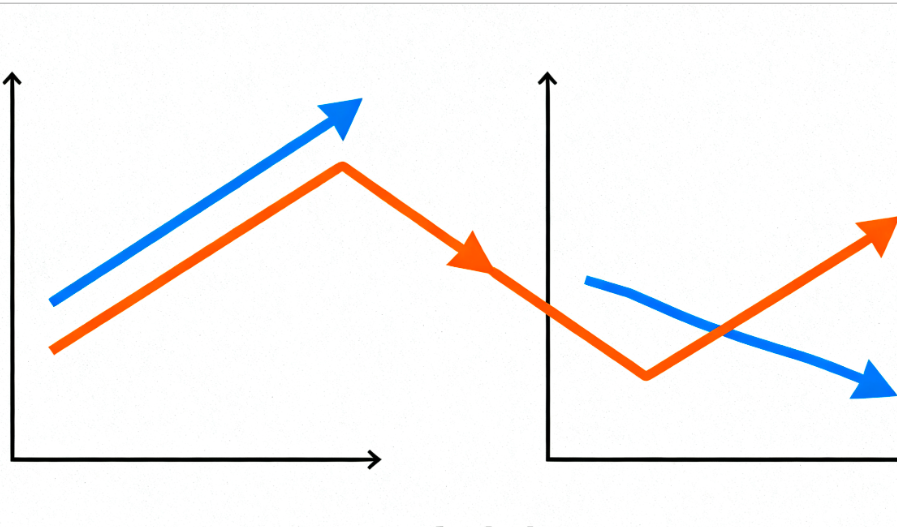
Since the beginning of the Trump administration's term in early 2025, the United States has been taking significant steps to strive to become the global center of the blockchain industry. If the U.S. wishes to achieve this goal, it needs to establish a more comprehensive framework around counterparty clarity. The passage of the GENIUS Act is highly significant, and the emergence of blockchain foundations adhering to clear U.S. regulations is also promising. However, more effort is required for the U.S. to firmly establish itself as a central hub in the blockchain space.
Building upon our recently published article, this article will proceed with the following logic: First, analyze the state of institutional demand for blockchain technology within the U.S., while explaining the crucial role that recognized legal entities complying with government standards play in driving a critical transformation in this field. Next, we will delve into previous discussions regarding the GENIUS Act and the CLARITY Act, clarifying the core role of a federal legislative framework in defining counterparty identity and enhancing transaction transparency. Subsequently, we will explore the significance of establishing partnerships between exchanges and stablecoin issuers. Following that, we will outline the key roles currently played by the Ripple, Stellar Foundation, and Hedera Foundation, which operate in the U.S. and strongly support enhancing counterparty clarity. Finally, we will provide an outlook on future trends for U.S. counterparties.
Institutional Demand for Recognized Legal Entities
Institutional demand for blockchain innovation is surging. Previously, we discussed the role of Bitcoin ETFs, the emergence of fund management companies, and the financing of U.S. DePIN infrastructure projects. A common thread running through these topics is the institutional demand side and the obstacles they face in participating.
Unlike private companies or retail investors, institutions such as banks and exchanges face a fundamental challenge when dealing with blockchain projects. They cannot conduct business with decentralized networks that lack a clear legal counterparty. In our recent article on counterparty clarity, we explored how foundations can fill this gap.
The challenge is that U.S. banks and exchanges cannot simply collaborate with decentralized protocols or anonymous developer groups. When considering establishing partnerships with potential collaborators, they require the other party to have a legally recognized entity identity, and this entity must be able to undergo comprehensive and rigorous KYC and AML process reviews to achieve sound corporate governance. In this process, foundations play a crucial role by providing a legal framework for blockchain projects, enabling institutions to participate without compromising the decentralized nature of the underlying network.
Compliance with U.S. Standards
Foundations can serve as third-party intermediaries because they have undergone comprehensive compliance reviews that align with U.S. federal and state regulations. The compliance frameworks adopted by these foundations typically include detailed record-keeping, transaction monitoring, and reporting mechanisms that meet the standards of regulators like the Financial Crimes Enforcement Network (FinCEN).
Notable typical examples include collaborations between foundations and major industry participants, such as Circle and Coinbase. These collaborations fully demonstrate how appropriate legal structures and compliance can drive significant integration between blockchain networks and established financial infrastructure. When a foundation can tangibly demonstrate its firm commitment to regulatory compliance, it opens a pathway for partnerships that previously seemed impossible.
Federal Legislative Framework: The GENIUS Act and CLARITY Act
Since January 2025, driven by the U.S. Trump administration, significant shifts have occurred in the domestic legislative and regulatory landscape. Previously, this area was dominated by the enforcement agenda led by the Securities and Exchange Commission (SEC) under Gary Gensler. This SEC approach often manifested in issuing Wells Notices based on vaguely defined policies.
On July 18, 2025, the U.S. passed the landmark GENIUS Act. This is the first framework legislation specifically for stablecoins in the U.S. The Act establishes clear oversight mechanisms and regulatory guidelines. Furthermore, it sets a clear precedent for blockchain regulatory legislation, paving the way for the passage of subsequent, more scalable bills like the CLARITY Act. The CLARITY Act will clarify the regulatory responsibilities of agencies like the Commodity Futures Trading Commission (CFTC) and the SEC over blockchain projects, providing much-needed certainty for projects seeking to operate within U.S. jurisdiction.
These legislative initiatives aim to create a more unified and coordinated regulatory environment in the U.S. Consequently, foundations and blockchain projects will no longer need to face a messy patchwork of state rules and unpredictable regulatory overreach, but instead have a clear federal framework to follow. This increase in regulatory clarity reduces legal uncertainty and provides institutions with an understandable and trustworthy compliance roadmap.
Facilitating Partnerships Between Exchanges and Stablecoin Issuers
Foundations play a critical and essential role in facilitating partnerships between U.S. exchanges and stablecoin issuers. By providing a legal framework that both parties can trust, foundations effectively reduce the friction and uncertainty that often hinder the establishment of collaborations. When exchanges consider listing a token or integrating a stablecoin, they must ensure the counterparty can continuously fulfill compliance obligations.
A major concern for institutional investors when dealing with unregulated counterparties is the potential for indirect involvement in money laundering or facilitating transactions for malicious actors. Although decentralized technologies offer significant advantages, they have also dramatically increased the speed of global capital flows. For traditional financial institutions, the risks of indirectly engaging in these markets through Decentralized Exchanges (DEXs) are too high, unless there is a robust counterparty strictly regulated by U.S. law.
Case Studies
Numerous foundations have emerged in the U.S., taking on the task of filling the role of a credible counterparty for banking institutions in this space. This opportunity represents the largest capital allocation opportunity in the web3 space since the initial coin offering (ICO) boom in 2017 and is key to unlocking institutional investment. Below are several leading foundations and how they are helping to drive this emerging market:
Ripple
Ripple's U.S. foundation actively promotes XRP integration partnerships with banks, demonstrating how a reasonable legal structure can assist traditional financial institutions in using blockchain technology for cross-border payments and settlement.
Stellar Foundation
The Stellar Foundation has collaborated with U.S. financial institutions to successfully implement cross-border payment solutions. By providing banks with a clear counterparty for conducting due diligence, the foundation facilitates the adoption and promotion of Stellar technology at the institutional level.
Hedera Foundation
Hedera's U.S. entity employs a compliance strategy tailored to the enterprise sector, forming partnerships with regulated companies across various industries. These collaborations fully demonstrate the supportive role foundations play beyond traditional banking, effectively promoting the application and adoption of blockchain technology in supply chain management, healthcare, and other regulated business areas.
The Future of U.S. Counterparties
As the U.S. continues to advance blockchain-friendly legislation, the barriers to institutional entry into this space are gradually lowering. Simultaneously, foundations are becoming indispensable bridges connecting decentralized markets with unprecedented scale institutional capital.
This trend will powerfully drive the widespread application of blockchain technology within the U.S. financial sector, fostering innovation in areas such as payments, securities settlement, and asset tokenization, while ensuring consumer protection and market integrity under regulatory oversight.
















